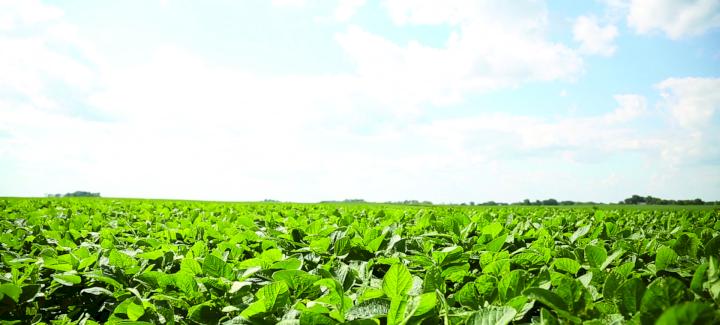
With 83% of the nation’s soybean crop in the ground and 56% emerged, growers need to research and prepare for common soybean diseases that could affect their crops throughout the busy growing season. It’s never too early to get ahead of these potentially yield-robbing threats to your soybean acres.
“Growers need to be prepared for the possibility of losing soybean yield to diseases,” says Tom Larson, Stine’s director of agronomy. “Last year, for example, 4.4% of the potential estimated soybean production was lost due to diseases. From stem and root rots to leaf blights, it’s important to be proactive throughout the growing season to get ahead of these common problems in soybean production.”
WHAT ARE THE MAJOR DISEASES OF SOYBEANS?
Sclerotinia stem rot (white mold), sudden death syndrome (SDS), charcoal rot and Phytophthora leaf and stem rot are some of the most common soybean diseases. Combined, these four soybean stem diseases destroyed almost 45 million bushels in 2022. Other diseases (leaf and aboveground), such as Cercospora leaf blight, frogeye leaf spot and Septoria brown rot, damaged close to 13 million bushels last year. It’s critical to understand the environments these diseases thrive in and how you can prevent them, if not this year, then the next.
SOYBEAN DISEASE IDENTIFICATION AND CONTROL
Soybean disease identification can help protect your soil and crops to produce maximum yield this growing season.
Named the leading soybean stem disease in 2022, soybean sudden death syndrome symptoms can appear between R1 and R6 growing stages as random yellow spots between leaf veins. Other SDS symptoms include soft, rotten roots; stem discoloration; necrosis of the leaf tissue between the veins; yellowing of leaves; and leaf drop. While infection of roots may occur early in the season, symptoms usually don’t develop until late July or August. The disease prefers cool, wet soils. Planting SDS-tolerant varieties is an effective way to limit your crop from developing disease. Additionally, crop rotation, tillage and the staggering of planting dates can help limit the disease.
“SDS is one of the most destructive diseases in soybeans,” says Larson. “Experts from Iowa State University Extension and Outreach conducted a study and found that, in areas with severe infestation, SDS can cause up to a 40% yield loss, especially when symptoms develop early. In 2022 alone, SDS destroyed close to 19 million bushels.”
More common in cool, humid and wet growing conditions, white mold can cause significant yield loss. Known for its fluffy white, cotton-like appearance on soybean stems, initial symptoms appear from R3 to R6 as gray to white lesions on plant stems. White mold can eventually lead to leaf death, stem rot and flower wilt. White mold overwinters in the soil and can do so for several years. Experts note it can easily spread to new fields when improperly cleaned seed is used and by the movement of infested soil.
“White mold can cause significant yield loss upwards of 10% bushel per acre,” says Larson. “We’ve seen it devastate fields. It should be a top concern for growers always, but there are ways to mitigate white mold by planting soybean varieties that offer some resistance to the disease and through crop rotation to small grains.”
Phytophthora root and stem rot of soybeans occurs in cool, wet conditions. The disease typically appear between VE and R6. A dark brown lesion on the lower stem that extends up from the taproot of the plant is the most common characteristic of the disease. Other Phytophthora root and stem rot symptoms can include yellowing of leaves, soft/rotting stems and roots and wilted plants. The disease is more severe in no-till fields or in areas that are susceptible to flooding. Tillage, seed treatments and planting resistant varieties are suggested for healthy soybean growth.
Caused by the soilborne fungus Macrophomina phaseolina, charcoal rot of soybeans issues the most damage when weather conditions are hot and dry. Early signs of charcoal rot include red to brown lesions on the roots and lower stems, which then turn to black specks. To help battle charcoal rot, planting the right variety, crop rotation and residue management can produce top yield and keep the disease at bay.
Contact your local Stine® agronomist or sales rep for more information on common soybean diseases and how to treat and prevent them now and in the future. Stine offers a full line of the industry’s most sought-after traits to help growers produce the most yield on their soybean acres.
Related Articles
-

Use Stine’s XP® seed treatments to prevent early injury to your crops
December 2025 in Agronomy
-

Understanding Stine’s enhanced oil profile soybeans
December 2025 in Agronomy
-

Soil sampling sets the stage for spring
November 2025 in Agronomy
-

Corn production growth paves way for more high-performing Stine® hybrids
November 2025 in Agronomy



